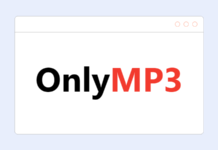Organising the work of everyone at your company can be a gargantuan effort. With so many moving parts, it can feel borderline impossible to manage everything efficiently and effectively.
Project management apps help to streamline this process. They make complicated tasks look a lot simpler. But with so many different options to choose from, how do you know you’re getting the best product for the cheapest price?
The same applies to apps that are designed to help you work from home. So to help you, we’ve detailed some of the advantages and disadvantages of some of the leading offerings. Hopefully, this will allow you to make an informed decision about whether the apps listed below are the right fit for you and your organisation.
Trello
One of Trello’s main selling points is its illustrious clientele; it counts Google, Kickstarter and Fender amongst its many devotees.
And the driving force behind its popularity is its intuitiveness. Based on Kanban boards, project tasks are cards on a board separated by columns.
You can break down tasks by client, person and month (amongst others). Everyone can see the same things giving everyone collective responsibility for working through different tasks.
It’s also very visually oriented. At a glance, you can see exactly what is required of you: the deadline, a summary of the task, as well as a list of comments if further action is required.
It’s easy to pick up and use. As soon as you’ve completed a task, you can pick it up and place it into the completed section of the whiteboard.
Some apps are overly complicated and bogged down by too many features. That is not an accusation you can level at Trello.
Asana
Asana is similar to Trello in that it’s incredibly straightforward to use. It does, however, have a little bit more flexibility than Trello. You can choose to view projects in a number of different ways: list view, board view, calendar view and timeline view.
It also has impressive third party integrations with the likes of Google Drive. You can share images directly onto the platform – negating the need for numerous lines of communication that can cause confusion and chaos.
Jira
Jira has a colder and more clinical look in comparison to Trello and Asana. While it might not be as aesthetically inviting as some of its contemporaries, it is packed full of useful functions and features.

It has options for issues and backlogs, which makes it popular with software development teams. And if you’re looking for a more agile solution to your project management problems, Jira may be the app for you.
There is a little bit of a steeper learning curve with Jira – and it’s one-note display does nothing to aid usability – but, once you get your head around it, it’s as valuable as any other offering available on the market today.
Summary
All three of Asana, Trello and Jira are useful additions to any team hoping to manage their work more effectively. Take the time to understand the functions of each app before you make a decision. Any project management tool has to dovetail with your organisation’s needs and goals.







